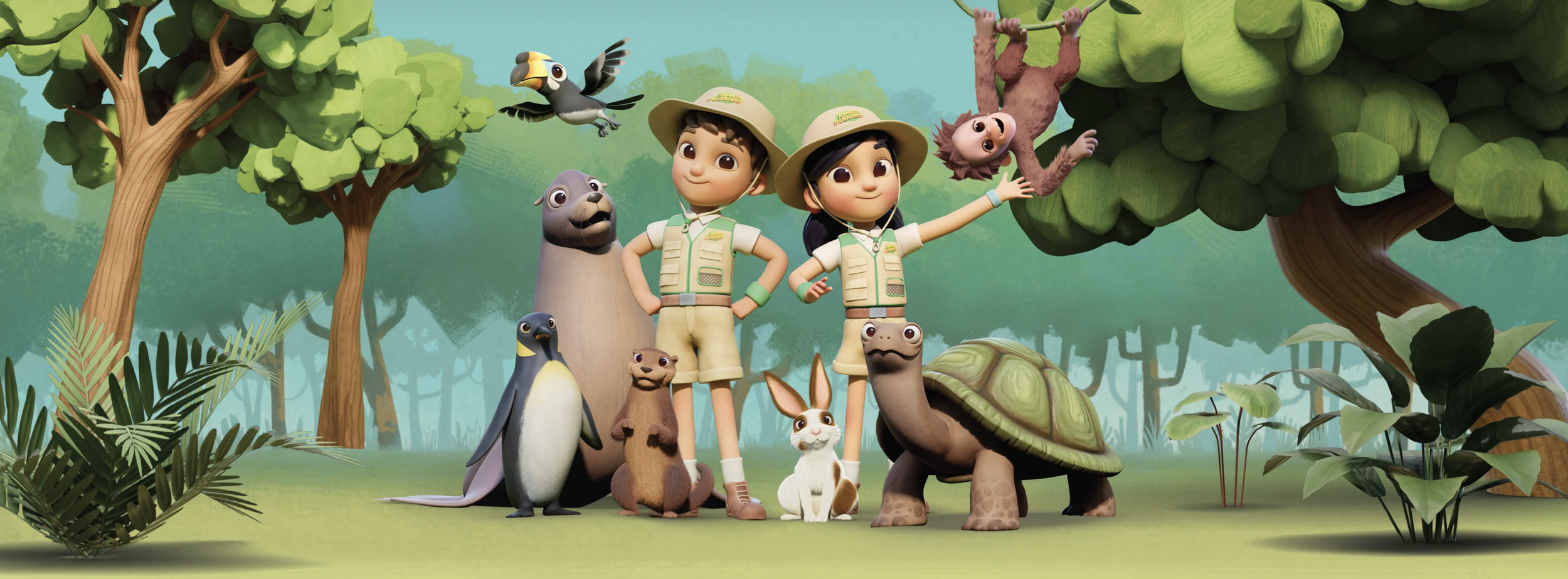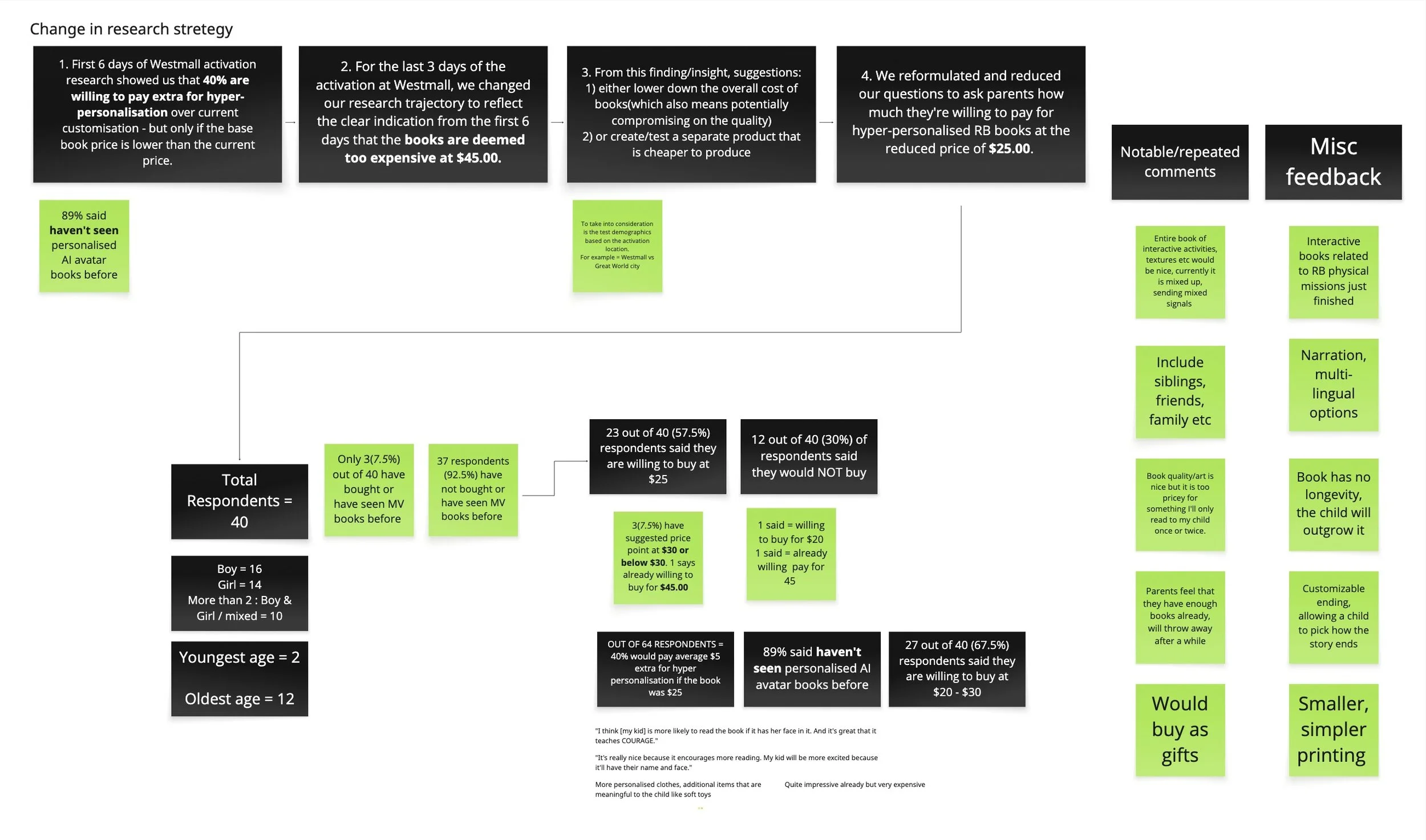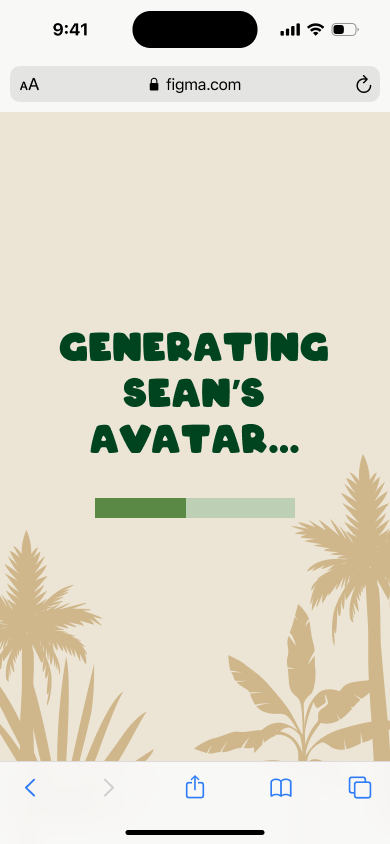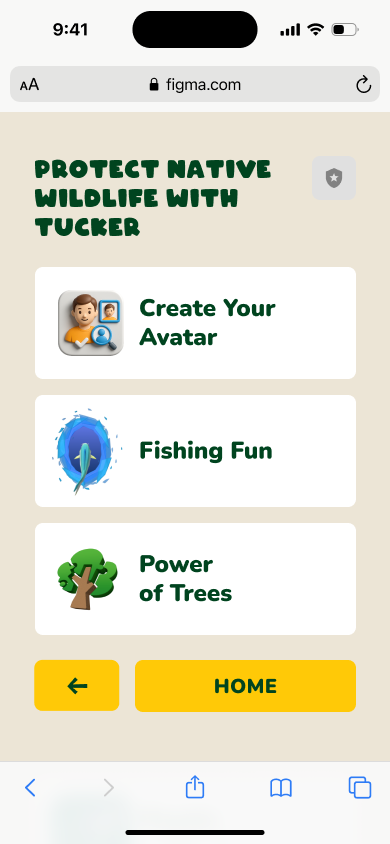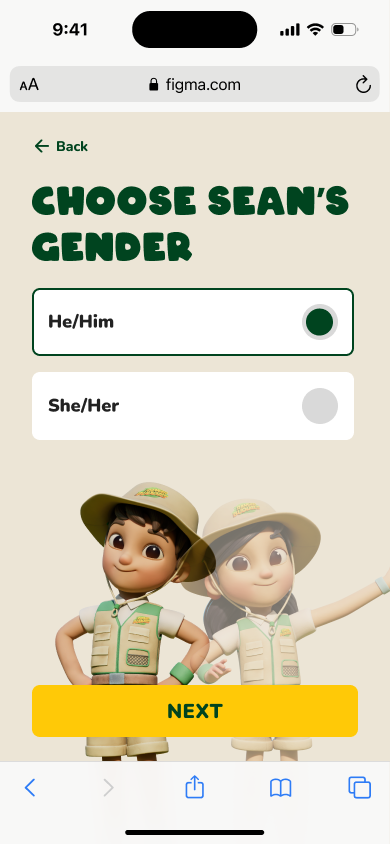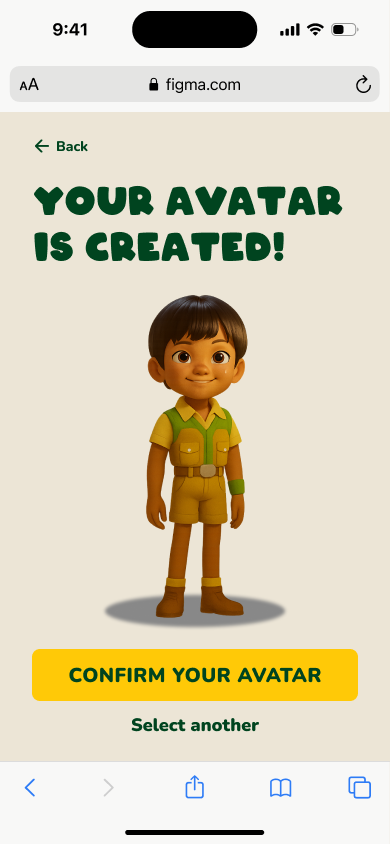AI Avatar Personalisation for Ranger Buddies
Project duration: Feb - July 2025
Project scope: user research, overall product journey mapping, user flow design, user interface design, usability testing.
Initial part of the journey mapping and user research in Feb/March done with the product team at BCGX.
About Ranger Buddies
Ranger Buddies empowers children to be heroes every day through fun-filled missions that make a difference. Little daily actions built into the missions teach children C.O.U.R.A.G.E. strengths and inspire them to care for themselves, others, and the Earth.
C.O.U.R.A.G.E. = Curious, Optimistic, Undaunted, Resourceful, Adaptable, Gritty, Empathetic. Each animal from the Singapore Mandai Zoo is tied to the value of C.O.U.R.A.G.E. (See images below).
The Ranger Buddies app—currently available as a web platform—is a tech product designed for parents to sign up their children for a unique learning experience.
Kids participate in a hybrid series of physical and digital AR missions that teach the C.O.U.R.A.G.E. values and foster care for the Earth through lessons on climate change and sustainability. These mission setups are hosted and sponsored by partners such as malls and hotels across Singapore, offering meaningful, family-friendly experiences in public spaces.
Overall User Journey Map
Current State Map: where are we at the moment?
Ranger Buddies offers a wide range of products, from its core digital mission app to personalized books that teach the C.O.U.R.A.G.E. values. Since the brand’s inception less than two years ago, the visual identity and MVP app experience have been fully developed—featuring user sign-ups, mission pages, profile management, and badge redemption screens.
Future State Map: where do we want to be in 1-2 years time?
The main development focus over the next few years is on creating a more holistic and varied experience for children and parents. This includes expanding personalization features, introducing more AR missions, and adding home-based activities and assignments to extend engagement beyond physical locations.
In parallel, brand and intellectual property development—through initiatives such as YouTube shows and merchandise—is a key priority to strengthen brand recognition and broaden audience reach.
Research Findings from Westmall Singapore
Research goal: Find out if parents are willing to pay extra for personalised avatar educational books, if so - how much?
Results:
Out of the 200 registered mission players, 25% responded = 64 parents total.
Youngest age of kids being 3, and the oldest at 13.
40% would pay extra for the book, average amount they would pay being $5 (this is if the base book price is around $20)
34% of respondents WOULD NOT buy. Biggest reason being that they find the book to be too expensive, and they feel like it would only be read once.
89% of parents haven’t seen personalised avatar books before
Observationally, almost all parents enjoyed the process and loved seeing their kids as Ranger Buddies avatars
Other findings/misc to take note of:
It's worth noting that the parents interviewed may come from lower-income backgrounds, with limited disposable income based on the demographic information provided.
Parents wanted to have options to include either siblings or themselves in the book.
Spme parents felt that they have enough books already, and asked for activity books or personalised content instead.
On the same note, a lot of parents asked for printed, personalised content that they can take home that’s related to the mission they just finished at the venue.
Parents with older kids thought the book content is too young for their kids.
Many thought these personalised books would be great as gifts.
User research was conducted with 100+ parents at the Westmall Singapore activation that happened in the month of March 2025.
Research method:
1) We built the very basic MVP of the AI personalisation flow to test
2) Showed parents the sample kid’s photo and the book cover outcome
3) Asked parents/kids if they would like to create their own avatars
4) Ask them to sign PDPA form for photo upload consent
5)Take photo of the kid(s) and convert them into the avatar
6) Ask main research questions after and document
The User Journey for Avatar Personalisation
The flow above represents the third iteration, refined through ongoing feedback and close collaboration between the developers and me. It is designed around the specific data required to generate optimal results using Leonardo AI (for image-to-avatar generation) and Cutout.Pro (for face mapping and extraction).
The interface leverages our existing Figma design system, and avatar components are assembled by attaching the AI-generated, pre-cut head to a pre-designed body template (further details on avatar creation are provided in the section below).
Iteration 1:
The product team initially considered including this flow as part of the onboarding experience, but ultimately decided against it to avoid extending the process and potentially increasing user drop-off rates.
Iteration 2:
To encourage higher product usage and conversion rates, the team has integrated the flow into a mission as an interactive activity. As an added incentive, a personalized cover page featuring the child’s avatar alongside the mission’s main Animal Buddy is generated—something parents can download or share on social media.
Creating the Avatars
The image of the boy below is the most recent input, and the Rudy the Rabbit poster/book cover represents the latest output generated from that image.
Following rounds of art direction and technical refinement, the outputs above were achieved. We continue to iterate on finer details—such as hairstyles and head shapes—which the system has more difficulty accurately detecting and generating.
There were few rounds of avatar development:
The first avatar output had a disproportionately large head compared to the body, and there were few iterations to fix this issue along with others such as neck positions and rotations.
(Development process in the left image)
Art direction in terms of the avatar was changed from the previous characters to the new Ranger Buddies styles, following the pre-existing "Al and Min” characters.
There were few iterations created by OpenAI’s ChatGPT where I input images of Al and Min and created standing, hopping and walking poses.
Following the previous convention, 4 sets of avatars with various skin tones are created as a baseline for the AI system to read, and additional hair styles are being created for girls hairstyles due to their varieties and complexities.
(Development process image below)




